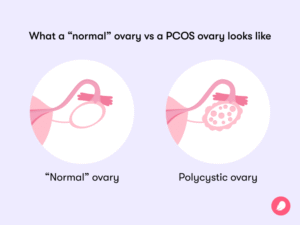Pinpointing What’s Causing Right-Sided Neck Pain
Understanding Right-Sided Neck Pain: Causes and Solutions
Right-sided neck pain is a common issue that can arise from various factors affecting the muscles, nerves, joints, or bones in the neck. While typically not life-threatening, it can significantly impact daily comfort. This article explores the types of pain experienced on the right side of the neck, their potential causes, associated symptoms, effective relief strategies, duration, and when to seek medical attention.
Types of Right-Sided Neck Pain
Neck pain manifests in different forms, each with distinct characteristics:
-
Muscle Pain: Often caused by overuse, stress, or muscle spasms, this pain may result in tender, tight knots (trigger points) in the neck or shoulder area.
-
Joint Pain: This includes sharp or aching discomfort in the facet joints of the neck, worsening when tilting the head toward the affected side. It may radiate to the upper back or shoulders.
-
Nerve Pain: Characterized by sharp, shooting pain, often due to irritated or compressed spinal nerve roots. It may be accompanied by tingling or a “pins-and-needles” sensation radiating down the arm.
-
Referred Pain: Discomfort felt in the neck but originating from another part of the body, such as the shoulder or chest.
-
Bone Pain: Less common, this pain stems from the cervical vertebrae and may indicate a more serious underlying condition.
Common Causes of Right-Sided Neck Pain
Several factors contribute to discomfort on the right side of the neck, primarily involving soft tissues like muscles and ligaments. Key causes include:
Poor Posture and Sleep Positioning
Incorrect posture during activities such as sitting, reading, or using electronic devices can strain the neck. Prolonged or repetitive poor positioning, such as hunching over a desk or sleeping with an unsupportive pillow, often leads to discomfort.
Physical and Emotional Stress
Stress, whether physical or emotional, can cause muscle tension in the neck. Examples include:
-
Muscle tightening due to anxiety or emotional strain.
-
Overuse of neck muscles during activities like overhead work or lifting heavy objects.
-
Sudden physical stress, such as catching a falling object or carrying a bag unevenly.
Injuries and Trauma
Neck injuries, particularly those affecting muscles or ligaments, are a frequent cause of pain. Common injuries include:
-
Whiplash: A sudden, forceful movement of the neck (e.g., during car accidents or sports) that causes hyperflexion or hyperextension, leading to pain, stiffness, and reduced mobility.
-
Falls, diving accidents, or contact sports injuries.
Medical Conditions
Though less common, certain health conditions may cause right-sided neck pain, including:
-
Acute Torticollis: Sudden, painful twisting of the neck to one side.
-
Cervical Spondylosis: Age-related degeneration of spinal disks, narrowing the space between vertebrae and stressing joints.
-
Cervical Osteoarthritis: Arthritis in the facet joints, causing pain in the neck, shoulders, or arms.
-
Herniated Disk: A displaced or ruptured disk pressing on nearby nerves.
-
Cervical Radiculopathy: A pinched nerve causing radiating pain or numbness.
-
Osteoporosis: Weakened bones that may lead to minor spinal fractures.
-
Infections: Such as osteomyelitis (bone infection) or meningitis (inflammation of brain and spinal cord membranes).
-
Fibromyalgia: A chronic condition causing widespread pain and fatigue.
Accompanying Symptoms
Right-sided neck pain may occur alongside other symptoms, such as:
-
Headaches or migraines.
-
Stiffness or limited range of motion in the neck.
-
Shooting nerve pain, numbness, or tingling in the arm or hand.
-
Pain radiating to the shoulders, upper back, or arms.
-
Clicking or grinding sensations (crepitus) during movement.
-
Dizziness, nausea, or difficulty swallowing (in cases of injury).
Emergency Symptoms
Seek immediate medical care if neck pain is accompanied by:
-
Meningitis Symptoms: Fever, severe headache, or a neck too stiff to touch the chin to the chest.
-
Heart Attack Signs: Chest pain, shortness of breath, sweating, nausea, or pain in the arm or jaw.
Effective Relief Strategies for Right-Sided Neck Pain
Most cases of neck pain can be managed with conservative, at-home remedies. Here are some effective approaches:
Ice and Heat Therapy
-
Ice: Apply ice within the first 48–72 hours to reduce swelling. Wrap a bag of ice or frozen vegetables in a thin cloth and place it on the neck for 15–20 minutes every 2–4 hours.
-
Heat: After 72 hours, switch to heat to relax muscles and improve blood flow. Use a warm compress, heating pad, or warm shower for 10–15 minutes at a time. Avoid overheating to prevent burns.
Optimizing Sleep Posture
-
Use a firm mattress and a supportive pillow designed for neck alignment.
-
Sleep with the neck in a neutral position, avoiding awkward angles.
Stretching and Gentle Exercise
-
Perform gentle neck stretches to relieve muscle tension, but avoid jarring movements.
-
Consult a physical therapist for tailored exercises to strengthen neck muscles and improve posture.
Over-the-Counter Medications
-
Nonsteroidal anti-inflammatory drugs (NSAIDs), such as ibuprofen, can reduce pain and inflammation.
-
Always follow dosage instructions and consult a doctor if needed.
How Long Does Neck Pain Last?
The duration of neck pain varies depending on its cause:
-
Muscle Strain or Poor Posture: Typically resolves within a few days to a week with rest and self-care.
-
Whiplash or Minor Injuries: May take 1–3 weeks to improve, though full recovery can take longer.
-
Chronic Conditions: Pain from conditions like osteoarthritis or herniated disks may persist or recur, requiring ongoing management.
When to Seek Medical Attention
Consult a healthcare provider if neck pain:
-
Persists beyond a week despite home treatment.
-
Is severe, worsening, or accompanied by fever, weight loss, or neurological symptoms (e.g., weakness, numbness).
-
Follows a traumatic event, such as a fall or car accident.
-
Interferes with daily activities or sleep.
Conclusion
Right-sided neck pain is often caused by muscle strain, poor posture, or minor injuries and can typically be managed with conservative treatments like ice, heat, and proper sleep positioning. However, persistent or severe pain, especially with emergency symptoms, warrants immediate medical evaluation. By addressing the root cause and adopting preventive measures, such as improved posture and stress management, you can reduce discomfort and enhance neck health.
💡 Frequently Asked Questions
Those people could possibly involve:
* Acute torticollis: Speedy onset of a agonizing twisting and rotating of the neck in direction of a person facet
* Cervical disk degeneration (spondylosis): Degeneration of the jelly-which includes disks in just the backbone, resulting in the spot amongst the vertebrae in direction of slender and implement anxiety in the direction of the joints of the backbone
* Cervical component osteoarthritis: Arthritis within the joints upon the facets of the vertebrae which can bring about discomfort inside of the centre or aspect of the neck, and may perhaps trigger soreness inside of the shoulders, foundation of the intellect, ear, jaw, or arm
* Herniated/ruptured disk: A disk that contains slipped out of issue (herniated/slipped) or ruined open up (ruptured)
* Cervical radiculopathy (pinched nerve): A compressed or irritated nerve inside the neck wherever it branches absent in opposition to the spinal twine
* Osteoporosis: A scenario inside which bone is destroyed down a lot quicker than is changed, and can lead to minor fractures within just the backbone
* An infection inside the neck: An infection can happen inside of the bone (osteomyelitis), disk (diskitis), or other components, these as a spinal wire abscess
* Fibromyalgia: A continual condition that Motives indicators these as soreness through the human body and tiredness
* Meningitis: Swelling of the membranes masking the head and spinal wire, generally triggered by means of a bacterial or viral an infection
* Swollen lymph node: Can aggravate and bring about spasms inside the neck muscle mass it is up towards
Other Signs With Neck Soreness upon the Straight Facet Neck ache might be accompanied by way of other indications, this sort of as:
* Problem
* Neck stiffness
* Nerve ache taking pictures down the arm and once in a while into the hand
* Numbness, tingling, or weak point inside the arm, hand, or other Room influenced by means of the included nerves
* Issues or agony going your brain inside a person or excess assistance
* Intellect cocked in direction of just one aspect
* Clicking or grating reliable or feeling (crepitus)
* Soreness within just the higher again, shoulders, or palms If yourself consist of a neck harm, on your own could possibly additionally contain indications that necessarily mean a want for clinical consideration, these as:
* Dizziness
* Nausea
* Weak spot
* Pins-and-needles impression or numbness
* Improvements in the direction of eyesight or listening to
* Issues focusing
* Trouble swallowing
What Aids With Specifically-Sided Neck Soreness?
Answer coming soon. We are working on detailed responses to this common question.
If OTC medicines aren’t thriving, your medical services could prescribe medicine these kinds of as:
* Prescription discomfort medication
* Muscle mass relaxants
* Confident antidepressant prescription drugs
Is Cracking Your Neck Terrible for On your own?
Answer coming soon. We are working on detailed responses to this common question.
How Extended Does Therapeutic Against Instantly-Sided Neck Discomfort Consider?
Answer coming soon. We are working on detailed responses to this common question.
⭐ Expert Tips
- Include seasonal or trendy variations to keep your meals exciting.
- Highlight prep shortcuts or time-saving techniques for busy cooks.
- Consider dietary restrictions and include substitution suggestions.
✅ Key Takeaways
- These dinner ideas are perfect for impressing guests or enjoying special occasions.
- Choose recipes that match your skill level and available kitchen tools.
- Presentation and taste both contribute to a memorable dining experience.
📣 Join Our Community
Want more inspiration like this? Subscribe to our newsletter for weekly dinner ideas and cooking tips!







